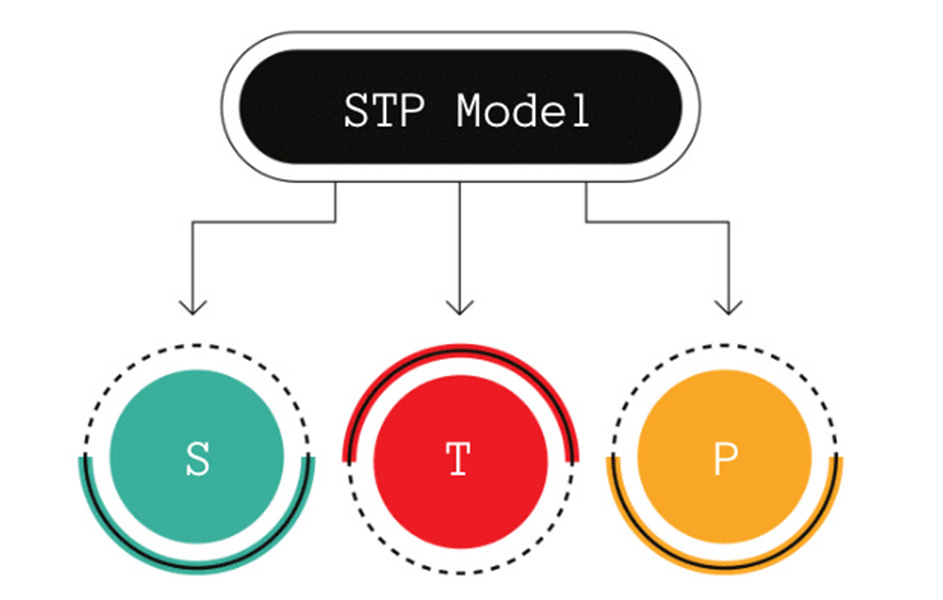
Understanding Market Targeting
Targeting is about assessing the appeal of each market segment and deciding which one to focus on and how to engage it. Your brand’s decision typically hinges on which segment is perceived to offer the most value to your business.
Understanding your potential customer base and determining the breadth or narrowness of your marketing efforts toward these potential consumers is pivotal for your brand’s prosperity over time.
In other words, targeting involves understanding your audience deeply and modifying your efforts to resonate with them effectively. By focusing on specific segments, you can enhance the impact of your marketing approaches and drive better results for your business.
Once you’ve pinpointed your target segments, the next step is selecting a targeting strategy to reach them effectively. Targeted marketing allows your marketing and sales teams to customize their message to specific groups of consumers in a concentrated manner.
This strategy integrates the marketing mix to craft the right offer and approach for each target segment, aligning with their preferences and needs.

Market Targeting Procedures
Market targeting is a pivotal process in any business’s marketing strategy. It guides the allocation of resources and efforts toward specific population segments. It involves a systematic approach to evaluating and selecting the most promising market segments that align with the company’s objectives and resources.
Evaluating Market Segments
In the first step of market targeting, you’ll evaluate various market segments to determine their suitability for your business. This involves assessing each segment against specific criteria to gauge its feasibility and attractiveness.
Attractiveness of Segment
When evaluating market segments, it’s crucial to consider various characteristics that contribute to their attractiveness. Factors such as size, profitability, measurability, accessibility, potential for growth, economic efficiency, and differentiability play a significant role in determining each segment’s appeal.
These key indicators provide valuable insights into which segments hold the most potential for your business and are worth targeting. By carefully scrutinizing these aspects, you can make informed decisions and manage resources effectively to maximize your business’s success.
Objectives and Resources of the Company
Evaluating whether the segment aligns with your company’s marketing objectives and fits within your resource capacity is essential. Take stock of your material, technological, and human resources to ensure they can adequately support the targeted segments.
This thorough assessment ensures your marketing strategies align with your overarching business goals. Additionally, it enables you to identify any possible obstacles or limitations that may impact your ability to reach and serve your chosen segments effectively.
You can improve outcomes and optimize marketing ROI by aligning your efforts with your resources.
Selecting Market Segments
After completing the segment evaluation, you must decide which market segments to enter. This decision involves determining which segments and how many to target.
After you select your target market, including groups of buyers with similar needs or characteristics, you can modify your marketing strategies and allocate resources.
Philip Kotler, a renowned marketing expert, outlines five alternative patterns for selecting the target market. These patterns offer different approaches to segmenting and targeting your audience. Your choice of a suitable option depends on the circumstances within and outside your company.
Targeting in STP Marketing
In the STP (Segmentation, Targeting, Positioning) model, targeting refers to selecting specific segments of the market that you want to focus on. Your target market is the portion of the qualified available market that your company chooses to pursue.
To target effectively, you need to identify and profile distinct groups of buyers who may have different preferences or needs for your products or services. It involves examining demographic, psychographic, and behavioral differences among buyers.

By understanding these differences, you can determine which groups offer the most significant opportunities for your business. These are your target markets. For example, if you’re selling athletic wear, you might target segments such as fitness enthusiasts, professional athletes, or casual gym-goers based on their unique preferences and behaviors.
Targeting allows you to allocate your resources more efficiently and tailor your marketing efforts to each group’s specific needs and interests. It increases the likelihood of success and helps you build stronger relationships with your customers.
Targeting Strategies: From Mass to Micromarketing
From casting a wide net with mass marketing to focusing on individual preferences with micromarketing, the spectrum of approaches offers various options for businesses to consider. Each strategy presents its opportunities and challenges, requiring careful consideration and strategic planning.
Undifferentiated Marketing
Undifferentiated market targeting, also known as mass marketing, treats the entire market as one big group without considering differences between segments. It’s like taking the whole cake instead of just a slice.
The goal is to reach as many people as possible, hoping they’ll engage with your brand. This approach is cost-effective because you’re targeting everyone.
Take IKEA, for example. They offer various products at affordable prices, appealing to almost every consumer. Plus, their commitment to sustainability adds to their mass appeal.
IKEA also creates an experience with their stores, making a trip there like a day out. This shared experience contributes to their mass-market appeal. However, some argue that mass marketing is becoming less popular. It can lead to increased competition, over-exposure, and high costs.
Moreover, consumers today want personalized experiences. They want to feel unique, which mass marketing doesn’t provide. This shift in consumer preferences encourages businesses to explore more targeted approaches.
Differentiated Marketing
Differentiated market targeting, also called segmented marketing, goes deeper than mass marketing. Instead of treating the entire market as one, you identify specific segments that offer the most value and develop unique marketing strategies for each segment.
This approach recognizes that consumers have different needs and preferences. Rather than offering one-size-fits-all products, you can focus on specific needs of each segment. It’s a more focused strategy that can lead to stronger customer connections.
Take Nike, for example. They sell more than one type of shoe to everyone. Instead, they have various products customized for different activities and preferences. Whether you’re a runner, weightlifter, or fashion enthusiast, Nike has something for you.
Nike’s success in this approach is evident from their impressive sales figures and strong brand reputation. Despite competition from other big brands, Nike remains a dominant force in the sneaker market. They achieve this by constantly innovating and understanding their target markets.
Segmented targeting helps brands avoid overexposure and stand out from competitors. By offering personalized products, brands can build stronger loyalty among consumers. This consistency in delivering tailored solutions leads to more sustained success than mass marketing approaches.
Moreover, differentiated targeting allows brands to connect more deeply with their customers by offering products that meet their specific needs. This personalized approach builds loyalty and sets brands apart from competitors in the long run.
Niche Marketing
Concentrated marketing, also known as niche marketing, focuses on a specific market segment. Instead of going after the whole cake, you target just one small, particular slice with unique attributes.
This approach allows you to channel all your marketing efforts towards a narrow consumer group, aiming to dominate that segment over competitors. Take Lush, for example. They differentiate themselves by embedding strong ethical messages in every aspect of their brand.
From fighting animal testing to raising awareness about climate change, Lush defines and promotes its niche through its values. Interestingly, Lush relies mainly on word-of-mouth and social media for marketing, which has proven highly effective.
However, it’s important to note that not all Lush customers may share the same values. Lush’s products are available to anyone, so they can’t guarantee that all customers align with their ethical stance. Despite this, niche marketing offers benefits like reduced competition, room for innovation, and increased brand loyalty.
While concentrated marketing allows brands to personalize their approach for a narrow audience, it doesn’t give complete control over who interacts with their products. This is where micro-marketing comes into play.
Micromarketing
Micromarketing takes targeted marketing to the next level by focusing on specific groups or individuals within a niche market. It’s about modifying marketing efforts to the unique characteristics of these small segments.
A good example of micromarketing done right is Groupon. This digital marketplace offers coupons for various products and services, catering to users’ varied needs and preferences. It’s incredibly popular in the US and has mastered the art of hyper-targeting users with personalized deals.
Groupon’s success lies in its customer-centric approach. Despite some drawbacks like difficulty in expansion and higher acquisition costs, Groupon’s versatility and highly personalized discounts set it apart in the digital landscape. With over 24 million active users in 2021, Groupon’s differentiation strategy has paid off.
When considering your targeting strategy, weighing the pros and cons of each approach is crucial. Identify your brand’s values and goals, analyze your data, and study your competitors before diving in. This way, you’ll be well-prepared to make informed decisions about your target market.
From mass marketing to micro-marketing, each approach offers unparalleled opportunities and challenges for businesses seeking to connect effectively with their target audience. By understanding each strategy’s aspects, you can tailor your marketing approach to best suit your business objectives and consumer needs.
The Importance of Targeting in STP Marketing
Targeting is crucial in marketing – it’s the key to reaching the right people with your message. Whether you’re a small startup or a big corporation, knowing who your audience is and how to reach them can make or break your marketing efforts.
Maximizing Your Marketing Budget and Resources
When it comes to marketing, ensuring that your resources are utilized efficiently is paramount to your success. By adopting a highly targeted marketing approach, you can direct every dollar spent on campaigns and tactics toward consumers who are likely to be genuinely interested in your offer.
Unlike broad outreach, which often results in wasted spend on audiences that will never convert, targeting allows you to optimize your budget around the channels and strategies that resonate most with your defined audience segments. Focusing on qualified leads ensures that your resources stretch further, ultimately maximizing the impact of your marketing initiatives.
Enhancing Return on Investment
Allocating your marketing dollars strategically can significantly boost your return on investment (ROI). When you target qualified leads that align with your well-defined target profile, you’re setting yourself up for success.
Conversion rates soar when you speak directly to the needs and interests of engaged prospects. With targeted outreach, you’re focusing your budget on the highest-intent customers already moving down the funnel. This means every dollar spent has the potential to yield greater returns.
In contrast, random, untargeted spending lacks the precision to efficiently identify and motivate strong customer profiles. Without targeting, you’re throwing money into the void, hoping for the best.
Enhancing Audience Engagement
Targeting allows you to refine your messaging and resonate better with your target demographics. With targeted marketing, you can modify your messages to connect with your audience’s specific needs, interests, values, and motivations.
Instead of using a one-size-fits-all method, you can frame your campaigns around what matters most to each customer segment. By tapping into buyer personas and conducting market research, you can uncover the terminology, themes, and ideas that resonate most with your audience.
This level of personalization and customization enables you to speak directly to what drives a prospect’s decision-making process. By crafting messages that match their interests and desires, you can increase the likelihood of engagement and conversion.
Targeting empowers you to refine your messaging and create campaigns that truly speak to the hearts and minds of your audience. By understanding their needs and tailoring your messages accordingly, you can foster deeper connections and drive better results for your business.
Elevating Personalized Campaigns
Targeting allows you to create highly personalized and customized marketing campaigns that resonate with specific audience groups. Personalized communication outperforms generic outreach, and studies show that consumers expect it.
According to McKinsey & Company, 71% of consumers expect personalization, and 76% get frustrated when it doesn’t take place.
Customizing your campaigns can boost relevance and engagement with your audience. Aligning your offers and messages to customer preferences demonstrates that you understand their needs and interests.
This level of personalization improves the customer experience and raises the likelihood of conversion.
Strengthening Customer Relationships
Targeting allows you to customize your communication to the customer preferences. Customers feel understood and valued when you consistently deliver messaging that aligns with their needs and priorities.
This ongoing communication fosters meaningful connections and encourages relevant dialogue, leading to deeper, more enduring relationships. Unlike generic outreach, which treats customers as mere sales leads, targeting shows them that you genuinely care about their needs and preferences.
By investing in targeted communication, you can demonstrate your commitment to understanding and meeting your customers’ needs, ultimately building stronger, more loyal relationships that benefit both parties.
Maximizing Conversions
When your messaging is personalized and addresses the particular demands of your audience, it naturally leads to better engagement and conversion metrics. By focusing your efforts on specific audience segments, you can tailor your messages to strike the right chord with recipients.
This personalized approach increases response rates and enhances various metrics, including open rates, click-through rates, lead generation, and sales conversions.
In essence, targeted marketing allows you to maximize the impact of your campaigns by connecting more effectively with your audience and driving better outcomes for your business.
The Art of Effective Targeting
Market targeting is a critical aspect of your marketing strategy that directly impacts your business’s success. Avoid casting a net too wide with generic targeting parameters, as this often results in low engagement and wasted ad spending.
To increase relevance and effectiveness, define your target audience based on demographics, psychographics, behaviors, and other key identifiers as specific as possible.
Furthermore, targeting should be regularly reviewed and optimized to adapt to market landscape changes. Consumer interests and behaviors evolve, and new audience segments may emerge, necessitating adjustments to your targeting strategies.
Set reminders to review your targeting quarterly or monthly and analyze changes in engagement and conversion rates to optimize your approach accordingly.
Testing different targeting approaches is crucial to identifying what resonates best with your audience. Experiment with narrow vs. broad targeting and other variations to determine the most effective strategies for your business.
Additionally, focus not only on who to target but also on who NOT to target, excluding audiences that may not align with your objectives or have negative sentiments toward your brand.
Effective targeting should align with your overall business goals: awareness, conversions, engagement, or other objectives. Ensure that your targeting efforts support these goals and consider both short-term conversion goals and longer-term brand lift.
Finally, remember that targeting and creativity work hand-in-hand, so align your ad creative with your targeting strategies to maximize effectiveness and drive results for your business.
Unlock Market Targeting with Dream Farm Agency’s Creative Solutions
At Dream Farm Agency, we craft interactive media and creative digital solutions designed to target your market segments directly. From captivating brand mascots to innovative Web3 and metaverse services, we offer a comprehensive suite of offerings to elevate your brand and engage your audience.
Our services include branding and marketing strategy, where we collaborate with you to craft personalized strategies that resonate with your target audience. Our brand design services ensure that your visual identity aligns with your brand’s values and communicates your unique story effectively.
With our creative content solutions, we create engaging and impactful content across various platforms to drive engagement and conversions. Additionally, we use emerging technologies to create immersive brand experiences that captivate audiences.
Contact us today to learn how Dream Farm Agency can help you reach your marketing objectives and elevate your brand presence. Leave a comment below to contact our team and start your journey toward marketing success!

Fareena



